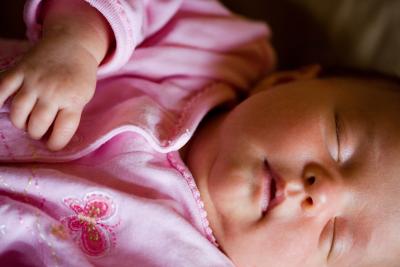Babies, with their thin, delicate skin, are susceptible to rashes, dry patches and other skin irritations. While some skin irritations may look uncomfortable or unattractive, most are not a serious health threat to your baby. Still, it’s always best to see a doctor if you are concerned. Causes of skin irritations range from hormonal changes to external triggers.
Causes
Several things can cause skin irritations in babies. The first is her mother’s hormones. These hormones, which affect babies while they are still in the womb, cause a newborn’s glands to become clogged with oil, causing the skin to become irritated and break out. Allergies are another cause of skin irritations. Babies can come into contact with something that makes them break out in a rash, such as grass or a certain laundry detergent. Diet is another culprit that can cause skin breakouts: Some babies may experience a rash from an allergic reaction to certain foods, such as strawberries. Overheating can also cause skin irritations, as can viruses.
Types
Rashes in the diaper area are among the most commonly seen skin irritations in babies. The skin becomes irritated by constant contact with urine or feces, and can be subject to a secondary fungal rash. Baby acne, which looks just like adult acne, is caused by an excess of the mother’s hormones in the baby’s body. Cradle cap is also caused by hormones. It appears as waxy, scaly areas on the baby’s head and face. Hives are raised, red areas that come and go on the body, usually caused by an allergy. Eczema, which is also caused by allergies, is similar to hives, but the lesions stay in place and often become thick, scaly and itchy.
Treatment
In many cases of skin irritations in babies, treatment is not necessary. Cradle cap and baby acne usually disappear with time, although special shampoos can be used on babies who have cradle cap. Contact rashes and heat rashes can be treated by removing the trigger. Moisturizing lotions can help patches of dry skin or eczema. Strict hygiene and diaper-less periods help clear diaper rash.
Prevention
Use mild detergents and soaps when washing your baby’s clothes and skin. Avoid giving your baby foods that may trigger an allergic reaction, such as strawberries and peanut butter, until he is over a year old. Allow a baby’s skin to dry thoroughly before clothing him, and leave his diaper off as long as possible to let the rash heal.
Warning Signs
Always call a doctor if you are worried about your baby’s skin irritation. While most are harmless, some rashes should be cause for concern. One skin irritation that indicates an urgent need to see a doctor is petechiae. This rash appears as small purple dots on the skin that do not fade when pressed. The dots can indicate an infection or bleeding problem. Other reasons to call a doctor include the presence of other symptoms such as a fever, persistent or worsening rritation after three days, or a rash accompanied by blisters, oozing or bleeding.





